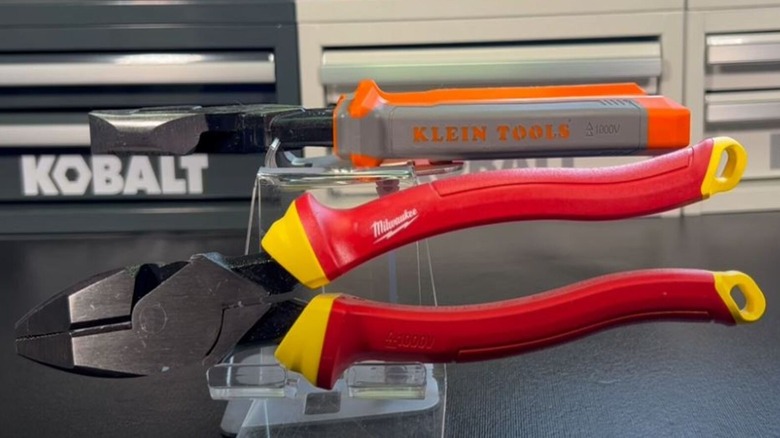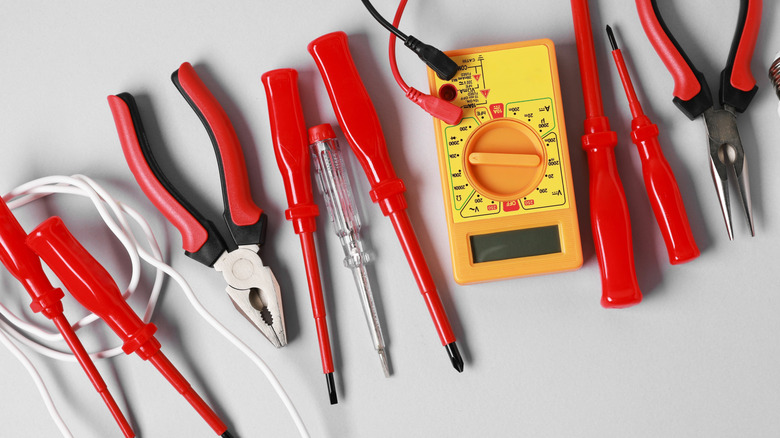How To Tell If Your Tools Are Insulated Before Using Them For Electrical Work
Due to the risk of electric shock, burns, and secondary injuries, working with electricity poses inherent hazards. Using properly insulated tools is important to protect users from arc flash, electric shock, and electrocution risks. Insulated tools reduce the risk of harm during live wire contact by serving as a barrier and can also shield equipment from damage from short circuits or unintentional contact with exposed energized parts. It's important to bear in mind that not all tools are insulated. To determine which are safe for electrical work, it is vital to check for markings that identify the insulation rating and certification.
Insulated tools are specialized hand tools designed specifically for electrical use. Unlike regular tools, insulated tools are covered or sheathed in non-conductive insulating material on their handles and usable surfaces that are normally made of nitrile or neoprene rubber, PVC, ABS plastic, or a combination. Worldwide, there are different standards that certify insulated tools; these include the VDE (Verband der Elektrotechnik) from Germany, the Switzerland-based International Standard IEC 60900, and the American Society for Testing and Materials, or ASTM 1505.
These different certifications require that insulated tools pass several stringent examinations conducted by test laboratories. Once the tools pass the tests, they are certified by receiving a stamp or engraving of marks and symbols, including a "1000V (volts)" and the "double triangle" marks from the ASTM, or a triangle with the letters "VDE" inside of it from the VDE institute. The presence of these marks on the tool is an indication that these are insulated and are safe for use in electrical work.
Insulated tools are important for safety around electricity
The 1000V marking on the handle of an insulated tool means that the tool is safe for use near or on live electrical circuits with voltages up to AC 1,000 volts or DC 1,500 volts. Similarly, the double triangle symbol signifies that the tool is suitable for work near energized components. The most common types of insulated tools are pliers, which are used to grab and manipulate wires and other parts. Other tools include wrenches that tighten or loosen fasteners near electrical components. Cutters that snip and cut electrical wires and cables, screwdrivers that can come in sets of different sizes, and other useful tools for electrical jobs also come in insulated versions.
The ability of insulated tools to protect the user is due to the high electrical resistance properties of their rubber or plastic insulation. The atoms of these materials restrain electron movement and obstruct the flow of electric current, making it unable to carry an electric charge, thereby acting as a shield between it and the user's hands. The insulation material for these tools also provides additional protection from fire, as these are rated flame-resistant and can function within wider temperature ranges.
Using the proper tools for electrical work and understanding and practicing safety measures is key to avoiding injuries or accidents. For professional tradesmen, using insulated tools is mandated by the American NFPA 70E, which specifies electrical workplace safety, and its Canadian equivalent, CSA Z462. For non-professional use, insulated tools are some of the essential tools in a home tool kit, because of the efficiency, work quality, and, most importantly, the safety and protection against electrical injuries that they provide.

